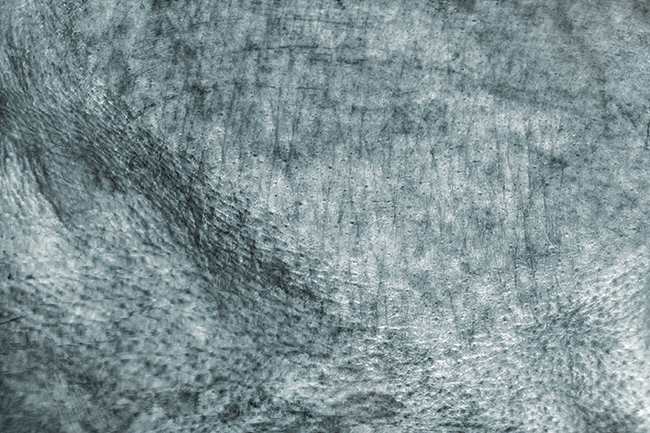Vicky Tsalamata is an Athens-based artist and Professor Emeritus of Printmaking at the Athens School of Fine Arts. Her work merges printmaking, mixed media, and conceptual thought to explore the social, political, and ethical dimensions of human existence. For decades, Tsalamata has used the language of visual art to question collective complacency and examine the tension between human fragility and resilience. She approaches creation as a space of dialogue—between self and society, between silence and protest. Her compositions often carry sharp undertones of irony and critique, confronting the viewer with the realities of corruption, inequality, and moral decay. Color, light, and texture act not just as aesthetic tools but as instruments of revelation. Through them, she gives form to the unseen pressures that shape modern life, inviting reflection and resistance.

Life is Getting Increasingly Toxic, Can We Breathe???
Between 2011 and 2015, during one of Greece’s most turbulent decades, Tsalamata created Life is Getting Increasingly Toxic, Can We Breathe???—a body of work born from exhaustion and defiance. The series emerged amid the economic crisis that swept the country, leaving citizens struggling under austerity measures, political corruption, and social fragmentation. Tsalamata channeled this suffocating atmosphere into visual form, posing a question that resonated far beyond Greece: can we still breathe when society itself becomes toxic?
In this series, breath becomes a metaphor for freedom, for dignity, for the bare minimum of human existence. The repeated question—“can we breathe?”—echoes as both plea and protest. Tsalamata transforms the feeling of suffocation into an artistic gesture that demands moral oxygen. Her prints and compositions act like lungs gasping within a polluted environment, their layers of ink and texture revealing both decay and endurance.
The works are not merely documents of crisis; they are responses to a deeper loss—the erosion of principles, the betrayal of justice. For Tsalamata, the crisis was not only economic but ethical. The social rot she observed was symptomatic of something larger—a collapse of empathy and responsibility. Her art turns that realization into visual resistance.
When the series was presented internationally—in Portugal at the Douro Global Print International Exhibition (Bragança, 2017) and the Douro International Print Biennial (Miguel Torga Museum, 2018)—it found global resonance. Viewers from different cultural contexts recognized the suffocating sense of moral paralysis reflected in their own societies. Tsalamata’s question, “Can we breathe?”, transformed from a local cry into a universal statement about the contemporary human condition.
The tone of this body of work is urgent yet restrained. It does not scream—it suffocates quietly. Tsalamata’s prints hold tension between beauty and toxicity: subtle gradations of color draw the eye in, even as the subject matter presses down. This interplay captures her skill in using printmaking not just as craft but as consciousness, where each mark carries both personal and political weight.

Life is Wildly Unpredictable, Can We Talk About It?
Created between 2010 and 2012, Life is Wildly Unpredictable, Can We Talk About It? predates the “toxic” series but anticipates its concerns. The works were made during the early years of the Greek crisis, when uncertainty had already begun to infect public life. In this series, Tsalamata expands her focus from suffocation to instability—from the inability to breathe to the impossibility of predicting what comes next.
The title itself is disarming. It asks for conversation rather than confrontation. Yet the question “can we talk about it?” carries an edge—implying that open dialogue has become nearly impossible in a culture dominated by fear, deceit, and political manipulation.
Through printmaking, Tsalamata captures the chaotic rhythm of those years. The forms in her work feel suspended between collapse and balance, as if struggling to stay upright in a storm of uncertainty. Layers of texture evoke urban decay, while subtle marks and voids suggest the absence of safety or trust. Each piece becomes a psychological landscape of crisis, where silence speaks louder than sound.
She situates the viewer amid moral and political disorder—where trauma, loss, homelessness, and violence live side by side with the corridors of power. The “next-door presences,” as she calls them, are both the suffering citizens and the politicians who perpetuate their pain. Her art refuses to let either vanish into abstraction.
The series gained international visibility as a visual statement of protest. Exhibited in several major print triennials and biennials—such as the International Print Triennial Network in Krakow-Wien (Austria, 2013), Krakow-Istanbul (Turkey, 2013), Krakow-Falun (Sweden, 2013), and later at Global Print in Portugal (2015) and the Douro International Print Biennial (Bragança, 2016)—the works stood as testimony to a nation’s crisis filtered through one artist’s conscience.
What distinguishes Tsalamata’s treatment of crisis is her refusal to reduce it to despair. Her art never surrenders to cynicism. Instead, it uses the discipline of printmaking—the repetition, the layering, the slow process—to insist on endurance. In her hands, even uncertainty becomes a form of dialogue.
Between Silence and Breath
Across both series, Tsalamata’s work reads as an anatomy of survival. “Breathing” and “talking” are not casual metaphors; they are the conditions of being human. When they are threatened, art becomes a means to restore them. Her prints invite viewers to share in that act of reclamation—to breathe again, to speak again, even when the air feels poisoned.
Through her art, Vicky Tsalamata reminds us that moral suffocation and unpredictability are not permanent states but calls to awareness. In naming them, she gives them shape. And in giving them shape, she creates space—for breath, for dialogue, for hope.

